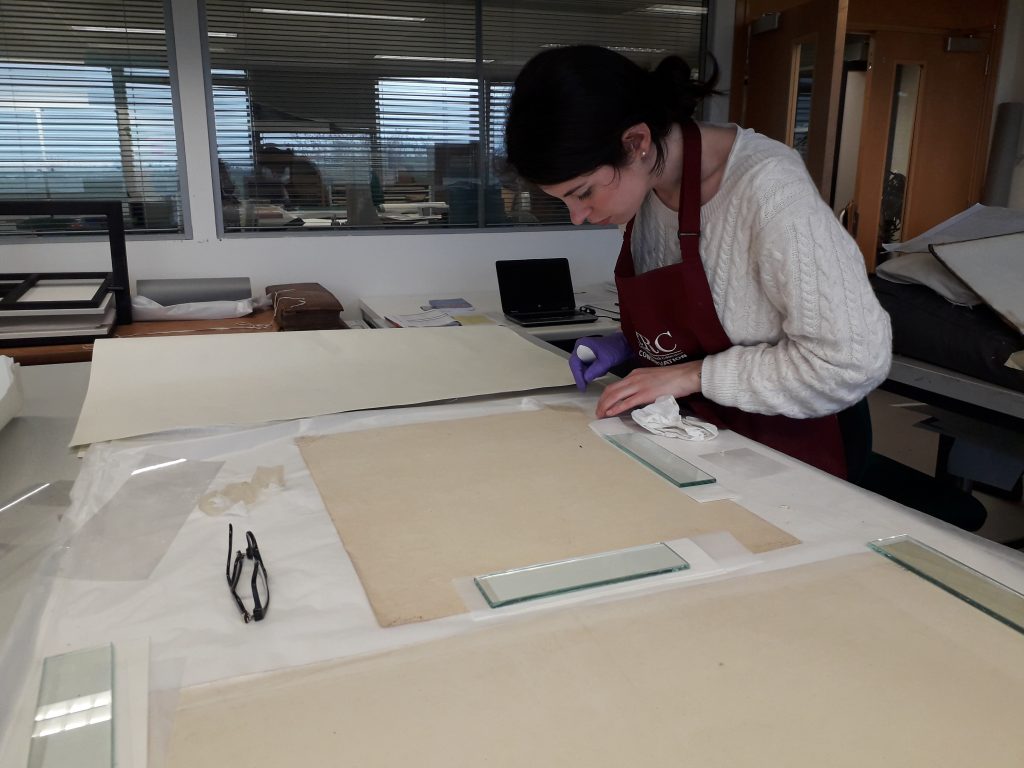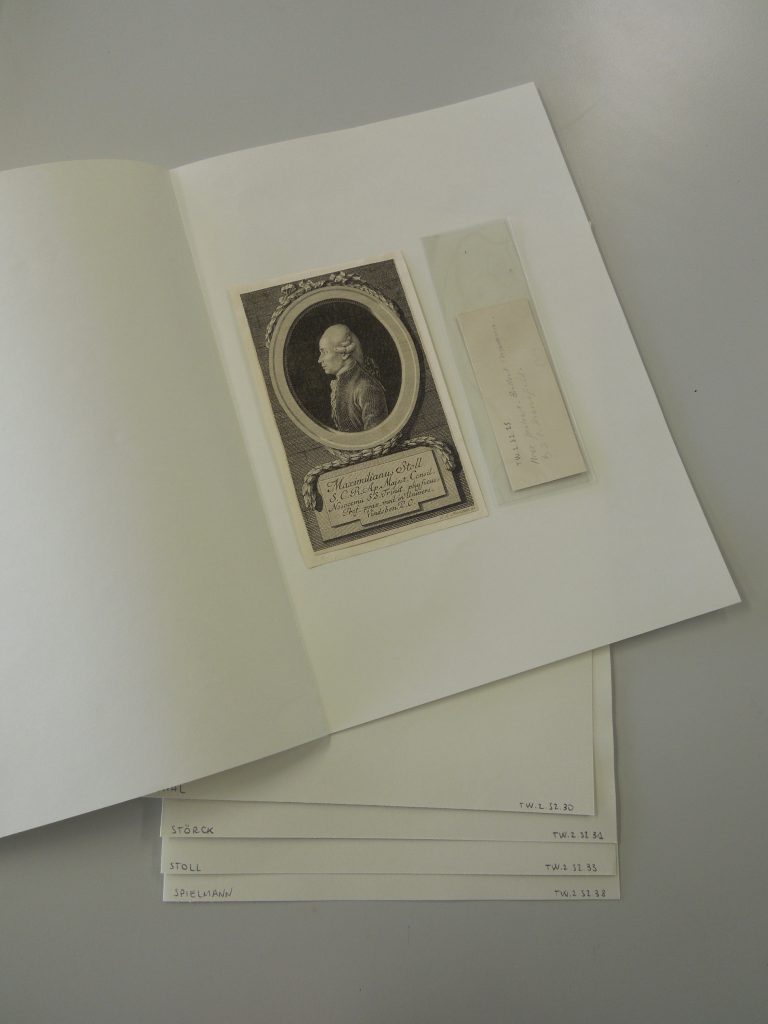In this week’s blog our final Thomson-Walker Intern, Giulia, talks about the completion of the Thomson-Walker project and her experience of working at the CRC…

Giulia working in the studio
We did it! The conservation of the Thomson-Walker collection of medical portraits is finally complete! It took four years, five interns, dozens of batches of carboxymethylcellulose (CMC), several metres of lens tissue, and an indefinite number of acid-free paper sheets, but the 3,000 prints are finally free from acidic secondary supports, adhesive residues and tape hinges, and are now ready to be fully catalogued and digitized. At the beginning of my internship, I wasn’t sure I was going to be able to get through the final boxes in the collection. The previous interns’ fantastic work (you can read all about here, here, here and here) left me with 600 prints to conserve, from portraits classed under letter “P” to the ones under “Z”, with two jam-packed boxes labelled “S” in between. I really wanted to do my best to complete the project, since I was going to be the last intern to work on the Thomson-Walker collection, and also because I was determined to challenge myself, testing the workload I was able to carry out in a short period of time.

Print, after conservation, rehoused in a single crease acid-free folder
I wasn’t expecting this at all, but I was able to record, treat and rehouse (a shocking) 704 prints in seven weeks. I evidently have to thank the previous interns who left detailed instructions on how to complete the work for this, as well as the supervision and support of the Special Collections Conservator, Emily. I managed to get into a high-paced working routine quite early into the first week. To begin with, I recorded all the relevant data from each print into an Excel spreadsheet and made a note of the condition and treatments carried out. I then removed the prints from their secondary supports by cutting the tape edges with a scalpel or carefully tearing the backing board off. After this, I surfaced cleaned the items using a smoke sponge before applying the CMC poultices to the adhesive and tape residues in order to remove them, and then dried the prints between blotters and Bondina. Once treated, I rehoused the items in acid-free single crease folders, then grouped them according to size into four-flap folders and organised them into drop-spine boxes. In addition to routine treatments, I also had the chance to do a few backing removals by immersion in water and a Sympatex humidification treatment of a chine-collé print.

Prints receiving poulticing treatment simultaneously
The internship experience has been far from boring, as between poulticing and folder-making, I had quite a busy calendar: I got to meet with different CRC staff members that introduced me to their role in the institution, visited conservation studios around Edinburgh, participated to a seminar on Raman Spectroscopy in the study of manuscript pigments, and supervised volunteers who helped out with the rehousing.
I also came across a few extraordinary prints, for example a woodcut print, described as “probably unique, certainly priceless”, that did actually have a price (£15, to be precise), and a reproduction of the famous painting The Anatomy Lesson of Dr. Nicolaes Tulp by Rembrandt.

TW.2.S2.28 Very early woodcut print

TW.2.T.15 Reproduction of Rembrant’s famous painting
Not only men were portrayed in the collection: I found an impressive two prints with female subjects among the hundreds I have treated (to be honest, there were three more prints of women in the collection, but one had the top half of her body torn out, one was turned into a secondary support and hidden under a wigged 18th century doctor, and one was used as a hinge!).

TW.2.W.2 Print with female subject with top half torn out

TW.1.A.35 An Irish beauty hidden under a male portrait
The internship has been a wonderful opportunity to test my ability to plan routine work, manage a limited workspace and make the most efficient use of my time, which is going to be helpful in future job applications. In the conservation studio I was able to observe how other conservators approach projects with different aims, and working in a university library gave me a deeper understanding of the interdisciplinary collaboration between staff members specialising in different aspects of conservation.
All CRC staff members have encouraged me to make the most of my internship and were very supportive of the initiatives that I took, boosting my confidence as an emerging conservator in an unexpected ways.
